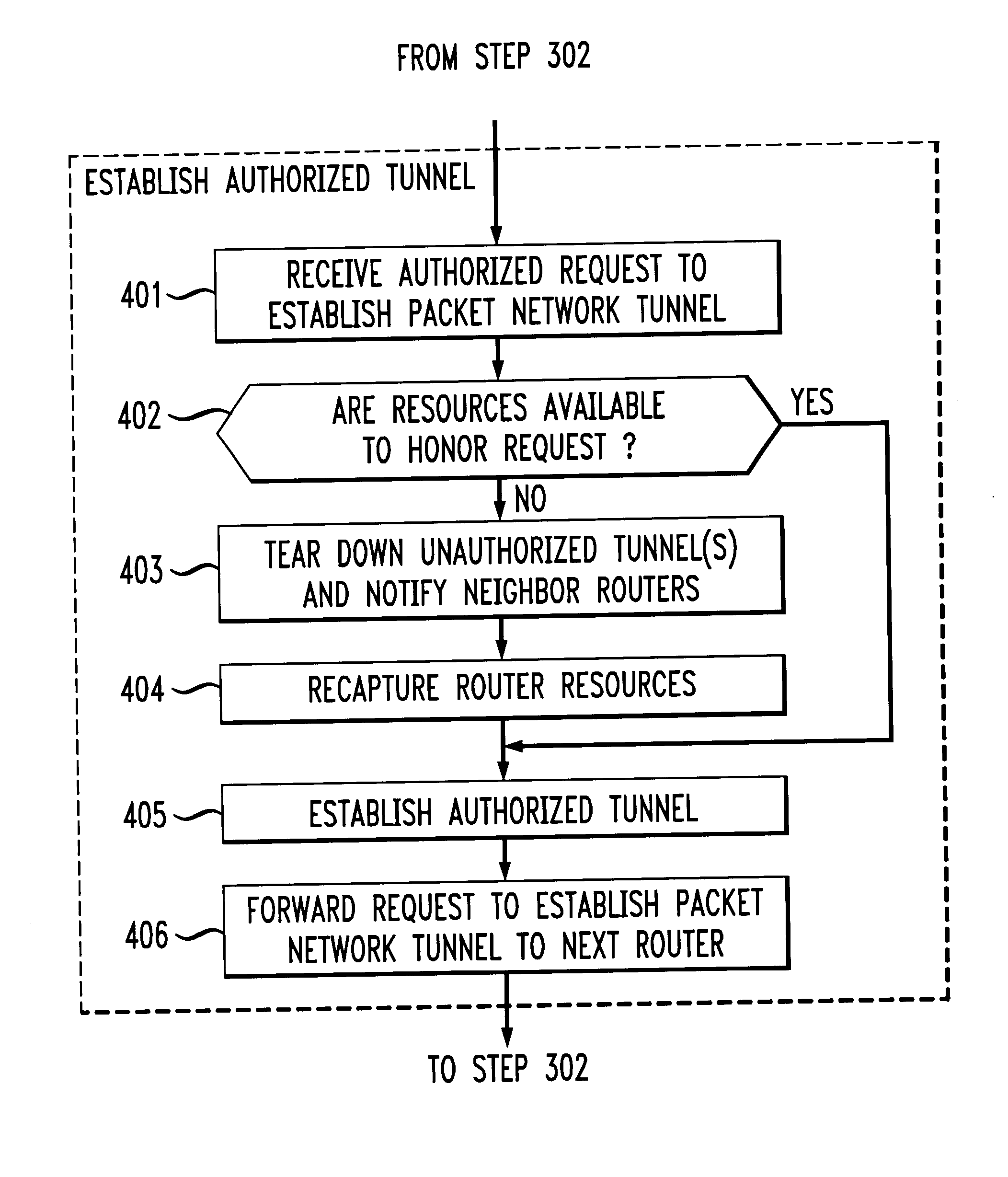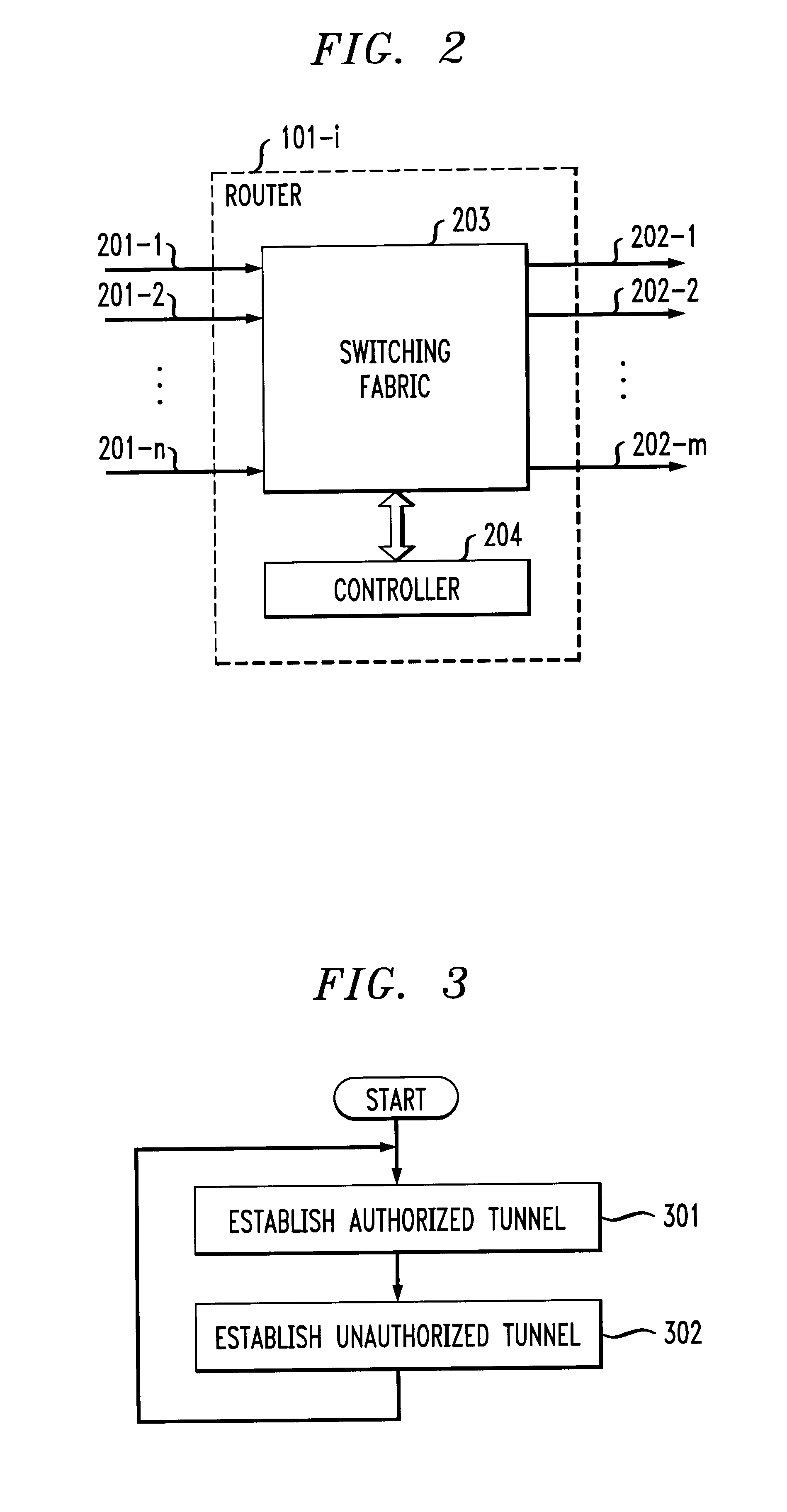Method and apparatus for packet network tunnel management
a packet network and tunnel management technology, applied in the field of packet networks, can solve the problems of inefficient allocation of packet network resources (i.e., bandwidth utilization), uncoordinated creation of packet network tunnels, and increased network costs
- Summary
- Abstract
- Description
- Claims
- Application Information
AI Technical Summary
Benefits of technology
Problems solved by technology
Method used
Image
Examples
Embodiment Construction
FIG. 1 depicts a packet network in accordance with the illustrative embodiment of the present invention, which comprises nine routers, router 101-1 through 101-9, that are interconnected with bi-directional telecommunications links as shown. Although the illustrative embodiment is depicted with only nine routers, it will be clear to those skilled in the art how to make and use embodiments of the present invention that comprise any number of routers that are interconnected in any topology.
Although the packet network depicted in FIG. 1 is represented as spanning a substantial portion of the continental United States, embodiments of the present invention can be either a local-area network (often called a “LAN”) or a wide-area network (often called a “WAN”). Furthermore, embodiments of the present invention can be a part of the Internet, or connected to the Internet. As will be clear to those skilled in the art, embodiments of the present invention can use any protocol suite (e.g., TCP / ...
PUM
 Login to View More
Login to View More Abstract
Description
Claims
Application Information
 Login to View More
Login to View More - R&D
- Intellectual Property
- Life Sciences
- Materials
- Tech Scout
- Unparalleled Data Quality
- Higher Quality Content
- 60% Fewer Hallucinations
Browse by: Latest US Patents, China's latest patents, Technical Efficacy Thesaurus, Application Domain, Technology Topic, Popular Technical Reports.
© 2025 PatSnap. All rights reserved.Legal|Privacy policy|Modern Slavery Act Transparency Statement|Sitemap|About US| Contact US: help@patsnap.com



